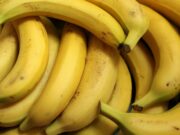Here are 30 interesting facts about albatrosses
- Albatrosses have the largest wingspan of any living bird. The wingspan of a wandering albatross ( Diomedea exulans) measures up to 12 feet across, which makes it the largest extant bird on Earth in terms of wingspan. This helps the wandering albatross soar 500 miles in a day and maintain speeds of nearly 80 mph for eight hours straight without even having to flap its wings.
- Albatrosses can go years without touching land. Once they fledge, albatrosses may spend a year or more at sea without setting foot on land, most of which is spent flying. Touching down in the water puts them at risk of shark attacks, so they touch down only briefly to feed. It’s widely believed that albatrosses must be able to sleep while flying.
- Albatrosses can live and raise chicks into their 60s. All albatrosses are long-lived birds that can survive for many decades. Some live well beyond 50. The best-known example comes from a Laysan albatross ( Phoebastria immutabilis) named Wisdom, who was first banded by scientists in 1956 at Midway Atoll. She is still alive and breeding as of 2021, making her at least 70 years old.
- Albatrosses drink salt water. Albatrosses have a special gland above their eyes that helps them filter out salt from the seawater they drink. The excess salt is excreted through their nostrils or bill, sometimes forming a visible saline solution that drips off their beaks.
- Albatrosses mate for life. Albatrosses form monogamous pairs that last for their entire lifespan. They only breed once every one or two years, depending on the species, and produce a single egg per breeding attempt. They share the duties of incubating the egg and raising the chick. They also perform elaborate courtship dances and rituals to reinforce their bond.
- Albatrosses are known for their dynamic soaring. Albatrosses have mastered a technique of flying that involves gliding along a continually curving path in a way that extracts energy from the gradient of wind velocity, or wind shear. This allows them to fly for long distances and durations with minimal effort. They also use locking elbow joints to keep their wings extended without using muscle power.
- Albatrosses are threatened by human activities. Most albatross species are endangered or vulnerable due to various human-induced threats, such as habitat loss, invasive predators, pollution, climate change and especially bycatch in fishing gear. Bycatch occurs when albatrosses are accidentally hooked or entangled by longlines or trawlers while trying to scavenge on bait or fish scraps. It is estimated that tens of thousands of albatrosses die every year from bycatch.
- Albatrosses are important pollinators and seed dispersers. Albatrosses feed on a variety of marine prey, such as fish, squid, crustaceans and jellyfish. Some of these prey items contain seeds or pollen from plants that grow on islands or near the coast. When albatrosses regurgitate these seeds or pollen on land, they help pollinate or disperse these plants, thus contributing to the biodiversity and ecosystem functioning of their breeding habitats.
- Albatrosses have a keen sense of smell. Unlike most birds, albatrosses have well-developed olfactory bulbs that enable them to detect odors over long distances. They use their sense of smell to locate food sources, such as schools of fish or squid, as well as potential mates and nesting sites2.
- Albatrosses have cultural traditions. Albatrosses learn their courtship dances and vocalizations from their parents and peers, and these behaviors vary among different populations and colonies. These variations are considered cultural traditions that are passed down through generations and maintained by social learning.
- Albatrosses can communicate with each other over large distances. Albatrosses use a range of vocal sounds to communicate with each other, such as whistles, grunts, croaks, moans and screams. Some of these sounds can carry over several kilometers, allowing albatrosses to stay in contact with their mates or chicks while they are away at sea.
- Albatrosses can adjust their body temperature. Albatrosses have a high metabolic rate and a thick layer of feathers that help them keep warm in cold climates. However, they can also lower their body temperature by up to 4°C when they need to conserve energy or cope with heat stress. They do this by reducing blood flow to their skin and extremities, as well as by panting or spreading their wings.
- Albatrosses can dive underwater. Although albatrosses are mainly surface feeders, they can also plunge-dive or swim underwater to catch prey. Some species can dive up to 16 feet deep, while others can dive up to 40 feet deep. They use their wings and feet to propel themselves underwater.
- Albatrosses have no natural predators at sea. Albatrosses are top predators in their marine environment, and they have few enemies in the water. Sharks may occasionally attack them when they land on the surface, but this is rare. The main threats to albatrosses at sea come from human activities such as fishing and pollution.
- Albatrosses face many dangers on land. Albatrosses are vulnerable on land because they are clumsy walkers and slow fliers that need a lot of space and wind to take off. They are also faithful to their nesting sites, which makes them reluctant to move even when conditions are unfavorable. On land, they face many hazards such as habitat destruction, human disturbance, egg collection, hunting and especially predation by introduced mammals such as rats, cats, dogs and pigs.
- Albatrosses belong to the same order as petrels and shearwaters. Albatrosses are members of the order Procellariiformes , which includes about 120 species of seabirds that share certain characteristics such as tubular nostrils , webbed feet , salt glands , long wings , hooked bills and stomach oil . Other members of this order include petrels , shearwaters , fulmars , prions and storm petrels .
- Albatrosses have different bill shapes depending on their diet . Albatrosses have strong , curved bills that help them grasp and tear their prey . However , different species have different bill shapes that reflect their feeding preferences . For example , wandering albatrosses have large , broad bills that allow them to catch large fish and squid . Royal albatrosses have narrower bills that help them catch smaller fish and crustaceans . Light-mantled albatrosses have slender bills that enable them to catch small fish near the surface .
- Albatrosses can hybridize with each other . Albatrosses are closely related to each other , and some species can interbreed and produce fertile offspring . This can complicate the taxonomy and conservation of albatrosses , as hybridization may blur the boundaries between species or reduce genetic diversity . For example , black-browed albatrosses can hybridize with grey-headed albatrosses , Campbell albatrosses and buller’s albatrosses .
- Albatrosses can fly across oceans and hemispheres . Albatrosses are highly migratory birds that can travel thousands of miles across oceans and continents . Some species can fly across the equator and visit both hemispheres during their annual cycle . For example , waved albatrosses breed on the Galapagos Islands near the equator , but spend most of their time feeding off the coasts of Peru and Ecuador in the southern hemisphere.
- Albatrosses can recognize individual faces . Albatrosses have good eyesight , and they can recognize individual faces of their mates , chicks , relatives and neighbors . This helps them maintain social bonds , avoid conflicts , cooperate with allies and avoid predators . They can also distinguish between humans based on facial features , clothing or behavior.
- Albatrosses are the only birds that have nostrils on the outside of their bills. Albatrosses have tubular nostrils that help them sense smells and regulate their body temperature. They can also use their nostrils to squirt out excess salt or stomach oil at predators or rivals.
- Albatrosses have stomach oil that they use for food and defense. Albatrosses can store food in a special organ called the proventriculus, where it is converted into a nutritious oil. They can regurgitate this oil to feed their chicks or themselves when food is scarce. They can also spit out this oil at enemies, which can damage their feathers and skin.
- Albatrosses are the fastest flying birds in level flight. Albatrosses can fly at speeds of up to 127 km/h (79 mph) without flapping their wings, thanks to their dynamic soaring technique. They can also fly faster than the wind speed by exploiting the differences in air pressure above and below their wings.
- Albatrosses have different names depending on their age and sex. Albatrosses are known by different names at different stages of their life cycle. For example, a young albatross is called a chick, a fledgling or a juvenile. A male albatross is called a cock, while a female albatross is called a hen. A pair of albatrosses is called a brace.
- Albatrosses are symbols of good luck or bad luck in different cultures. Albatrosses have been associated with various superstitions and legends by sailors and explorers. Some believed that albatrosses were the souls of lost sailors or messengers from God, and that killing them would bring bad luck or curse. Others believed that albatrosses were omens of good luck or protection, and that wearing their feathers or bones would bring fortune or ward off evil.
- Albatrosses are featured in many literary works and artworks. Albatrosses have inspired many writers and artists with their beauty and majesty. One of the most famous examples is the poem “The Rime of the Ancient Mariner” by Samuel Taylor Coleridge, which tells the story of a sailor who shoots an albatross and suffers the consequences. Other examples include the novels “Moby-Dick” by Herman Melville and “The Hitchhiker’s Guide to the Galaxy” by Douglas Adams, and the paintings “Wanderer above the Sea of Fog” by Caspar David Friedrich and “The Albatross” by Gustave Doré.
- Albatrosses are related to petrels and shearwaters. Albatrosses belong to the same order as petrels and shearwaters, which are also seabirds that share certain characteristics such as tubular nostrils, webbed feet, salt glands, long wings, hooked bills and stomach oil. Other members of this order include fulmars, prions and storm petrels.
- Albatrosses have different bill shapes depending on their diet. Albatrosses have strong, curved bills that help them grasp and tear their prey. However, different species have different bill shapes that reflect their feeding preferences. For example, wandering albatrosses have large, broad bills that allow them to catch large fish and squid. Royal albatrosses have narrower bills that help them catch smaller fish and crustaceans. Light-mantled albatrosses have slender bills that enable them to catch small fish near the surface.
- Albatrosses can hybridize with each other. Albatrosses are closely related to each other, and some species can interbreed and produce fertile offspring. This can complicate the taxonomy and conservation of albatrosses, as hybridization may blur the boundaries between species or reduce genetic diversity. For example, black-browed albatrosses can hybridize with grey-headed albatrosses, Campbell albatrosses and buller’s albatrosses.
- Albatrosses can fly across oceans and hemispheres. Albatrosses are highly migratory birds that can travel thousands of miles across oceans and continents. Some species can fly across the equator and visit both hemispheres during their annual cycle. For example, waved albatrosses breed on the Galapagos Islands near the equator, but spend most of their time feeding off the coasts of Peru and Ecuador in the southern hemisphere.
Facebook Comments


































